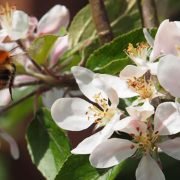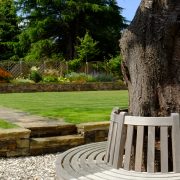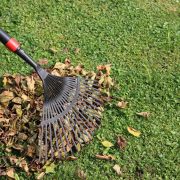What to do in your garden in June
At last the cold weather and frosts are behind us and the garden is bursting with life. June is an exciting and busy month with a seemingly endless list of things to do.
You will really have to work hard this month to keep on top of weeds and keep a watchful eye out for slugs, snails and other pests that will feast on your growing plants and veg of you give them half a chance.
Take a look at our June tips to help you make the most of your garden this month:
General
- Plant a summer hanging basket
- Gradually lower the cutting height of your mower as grass growth increases
- Spray roses showing signs of diseases such as blackspot, rust or powdery mildew
- Apply a combined weed, feed and moss killer to your lawn if you think it needs it
- Top up water levels in pools and remove water weeds with a net
- Hoe borders on hot sunny days to remove developing weed seedlings
- Continue watering anything newly planted until it has established
- Treat problem weeds emerging in borders with herbicide
- Lightly trim new growth on box hedging
- Make elderflower cordial
Vegetables / Fruit
- Finish planting out vegetable crops, including tomatoes, beans, courgettes and sweetcorn
- Sow a few seeds of salad leaves every 2-3 weeks
- Use netting to protect developing and ripening fruits from birds
- Tie in new shoots on blackberries, raspberries, loganberries and other cane fruits
- Water gooseberries and strawberries to encourage fruits to swell
- Thin out emerging raspberry canes if they’re too congested, leaving new canes about 15cm apart
- Thin out congested fruits on apples and plums – the remaining fruits will grow far larger if competition is reduced
- Sow seeds now: lettuce, rocket, spinach, beetroot, dwarf French beans, runner beans, radish, carrots, calabrese, mini-cauliflowers, spinach, chicory, endive, kohl rabi, peas, spinach beet, swede and turnips
Lawns
- Gradually lower the cutting height of your mower as grass growth increases
- Weather permitting mow twice a week
- Trim the edges and borders of the lawn for a neat and tidy finish
- Apply a combined weed, feed and moss killer to your lawn if you think it needs it
- If any bare patches appear simply repair them with a lawn restorer product
Flowers
- Use secateurs to remove suckers growing from the stems of standard roses
- Tie tall border plants like delphiniums to their supports
- Finish planting out dahlias, cannas and summer bedding
- Cut back dead and dying foliage on spring bulbs
- Deadhead camellias and rhododendrons after flowering
- Train clematis shoots to their supports
- Finish dividing hardy primulas
- Prune early summer-flowering shrubs like philadelphus and deutzia once the flowers are over
- Sow seeds now: wallflowers, sweet Williams, Canterbury bells and forget-me-nots
Greenhouse
- Increase greenhouse shading if temperatures inside are getting very hot
- Take cuttings from houseplants
- Damp down the greenhouse floor every morning
- Water pots and growing bags daily
- Set up a ‘watering bench’ using capillary matting to look after pot plants
- Sow seeds of Christmas cherry (solanum) to grow as winter pot plants
- Hang yellow sticky traps in the greenhouse to help control whitefly
- Thin out heavy crops of peaches and nectarines, leaving remaining fruits about 10cm apart
- Repot any houseplants that are pot bound
Pests
- Watch out for cabbage pests
- Watch out for red lily beetle on the tips and leaves of lilies. Squash any you find, or spray with a suitable pesticide
- Slugs can be a real problem now, particularly on hostas and salads – use good organic slug pellets, or if you want a more natural method try beer traps
Need more advice? Post a question on our Facebook page or pop into the garden centre and talk to a member of our experienced garden team.











